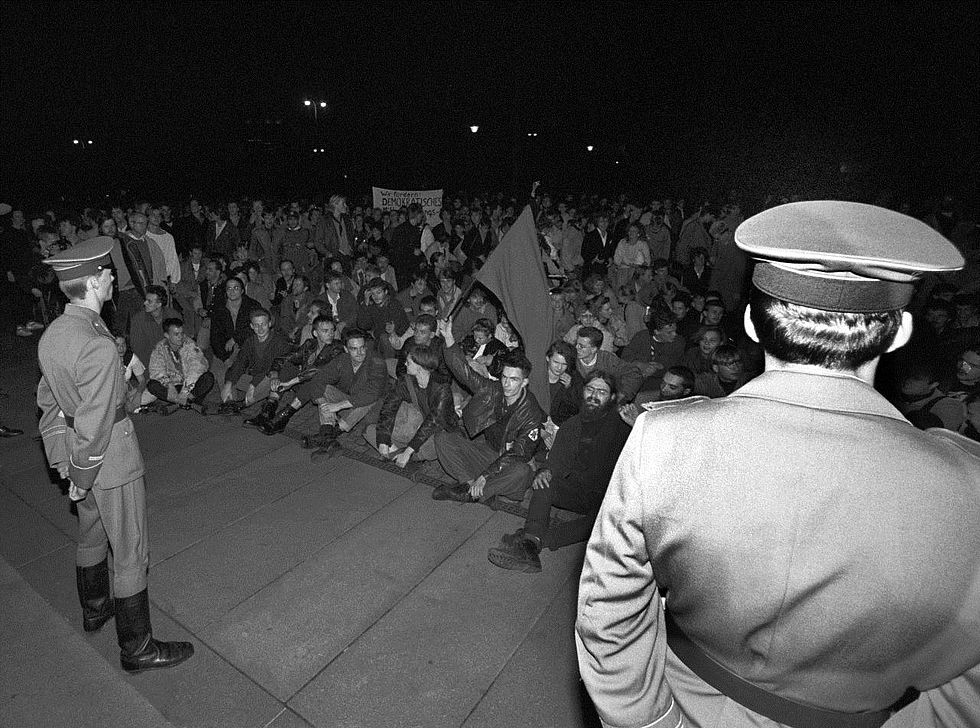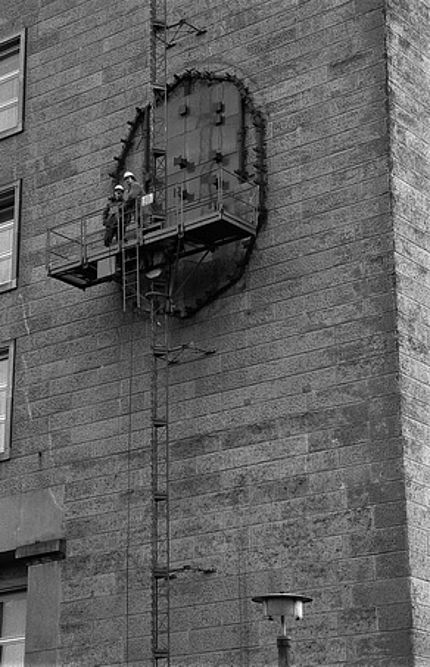- Home >
- Revolution >
- The battle for power
After the fall of the Wall, the situation in the GDR continued to worsen. In the months that followed, people continued to demonstrate on the streets, while there were strikes in factories and prisons. They called for the SED to renounce its right to leadership. Members of the SED also revolted, and even people in the army and police protested.
At the beginning of December 1989, civil rights activists occupied key Stasi buildings. The SED-dominated government attempted to keep control of the country's administration. But when GDR citizens stormed the secret police headquarters in Berlin in January 1990, the last bastion of power fell.
The government, only in office for two months, ought to have resigned. Instead, Prime Minister Hans Modrow appointed representatives of the opposition as additional ministers in his government. At this time of turmoil, the Central Round Table guaranteed a non-violent transition to a democratic future.


